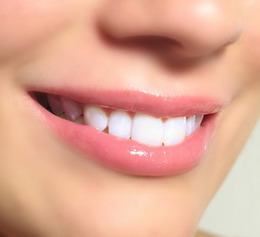How To Get Rid Of Diaper Rash In Baby
Healthy Baby TipsProblem diaper rash is common in babies, but there are some tips to get rid of it. Diaper rash is an inflammation in the diaper-covered area, such as around the genitals, buttocks, and inner groin. Usually reddish with light abrasions and itching. Diaper rash occurs because there is friction between the diapers with baby's skin. Diaper rash is most common in infants under the age of 15 months, in which the outer layer of skin is still very thin and vulnerable to irritation. The elderly who are not able to control urination can also develop a diaper rash, but this rarely happens because the skin is thicker than the baby. Diaper rash is usually not serious, but it can cause the baby to be uncomfortable.

Symptoms of diaper rash
Symptoms of diaper rash include redness, swollen skin on the buttocks, thighs, and genitals. In mild cases the skin becomes red. In cases of more severe pain may occur. Mild cases disappear within 3 to 4 days without treatment. If the rash persists or reappears after treatment, consult your doctor.
Cause of diaper rash
Many years, diaper rash associated with a variety of cases such as teething, diet, and ammonia in the urine. However, experts now believe it is caused by the following things:
- Too humid
- Injury or friction
- Skin, prolonged exposure to urine, feces, or both
- Fungal infections
- Bacterial infection
- Allergic reaction to diaper material
When the skin is wet for too long, the skin layer that protects the skin starts to break down. When wet skin is rubbed, also more easily damaged. Humid due to a full diaper can be harmful to the baby's skin and makes it easier to be injured. When this happens, it can be a diaper rash. Further friction between the moist folds of skin that makes rash became more severe. This is what causes diaper rash is often formed in the skin folds of the neck and upper thigh.
More than half of infants aged 4 months to 15 months, had, diaper rash at least once in 2 months. Diaper rash is more common in the following circumstances:
- Once baby gets older, mostly between the ages of 8-10 months
- If the baby is not kept clean and dry
- If the baby is frequent bowel movements, especially if the stools remain in the diaper all night.
- When babies start eating solid food
- When the baby is taking antibiotics or who are breast-feeding infants whose mothers received antibiotics.
Infants who consume antibiotics easier suffers diaper rash caused by yeast infection. Fungus infects the weak skin and causes a bright red rash with red spots on the edges. You can treat these complaints with consult a doctor.
Tips to get rid of diaper rash
1. Change the diaper as often as possible. Change the diaper as soon as the child urinate or defecate. This prevents moisture in the skin. Use diapers with loose, clean the diaper area gently with water. You do not need to use soap every time you change a diaper or every bowel movement. (Babies who are breastfed can defecate as much as 8 times per day). Use soap only when the stool is not easy to get out.
2. Use clean water to clean the diaper area every diaper change. Use running water so you can clean and rinse without rubbing is not necessary.
3. Pat dry, let the area in the open air so that it is completely dry.
4. Do not use baby powder or talc because it can cause problems with your baby's breathing.
Avoid always clean up with a paper towel to dry the skin. Alcohol or perfume in these products can irritate baby's skin.
5. Use a thin layer of ointment, or protective creams (such as those containing zinx ixide or petrolatum) that you can buy in pharmacies to form a protective layer on the skin. This ointment is usually thick and sticky and not lost, all at the next diaper change. Keep in mind loud scratching or rubbing will only further aggravate the damage to the skin.
Consult your doctor if the rash:
- Blisters or pus contained
- Does not disappear within 48 to 72 hours
- Become more severe
6. Use creams containing steroids only if your doctor recommends. The cream is rarely necessary and may be harmful
Which type of diaper should be used?
There are many brands of diapers. Diapers made of cloth or disposable materials. After use cloth diapers can be washed and reused, whereas disposable diapers can be discarded after use.
Research suggests that diaper rash is less common in the use of disposable diapers. In children who use highly absorbent disposable diapers tend to lower the number of diaper rash. Regardless of the type of diaper you use, diaper rash infrequent or mild if you frequently change the diapers. If you use cloth diapers, you can use a protective layer (stay dry liner) on the inside to keep baby drier. Using cloth diapers, disposable diapers or both, always replace when necessary to keep your baby clean, dry, and healthy.






















